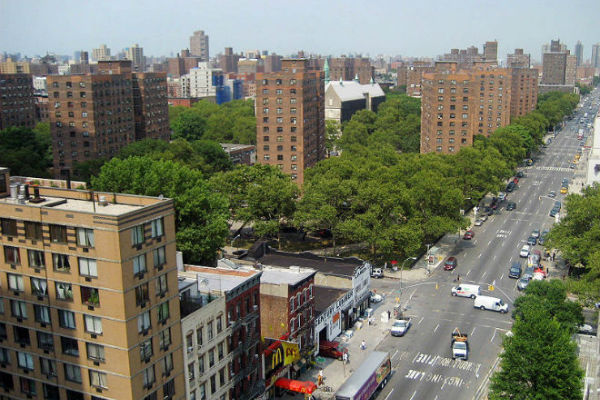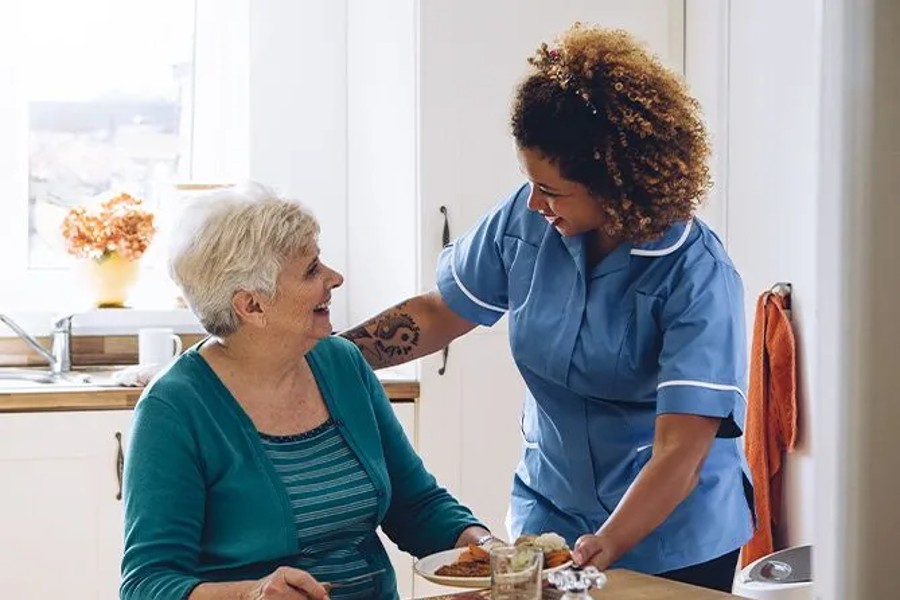 The Health Department today released a new Vital Signs report on secondhand smoke exposure and smoke-free housing policies in New York City. Secondhand smoke exposure is the involuntary exposure to smoke from a burning cigarette or from another person exhaling smoke from a cigarette. According to the data, 44 percent of adult New Yorkers in 2016 reported being exposed to cigarette smoking while in their home – whether the source of smoke was from another apartment, house, or from the outside. The rate of secondhand smoke exposure was assessed by asking individuals if they smelled cigarette smoke. Secondhand smoke exposure was found to be more prevalent among Latino adults, Black adults and those in high-poverty neighborhoods. Latino adults (56 percent) were more likely to report being exposed to secondhand smoke from the outside than other non-Latino racial/ethnic groups. Black adults reported exposure in their home at higher rates than White and Asian/Pacific Islander adults (44 percent versus 38 percent and 35 percent, respectively). Additionally, New Yorkers living in medium-, high- and very-high poverty neighborhoods were more likely to report exposure to secondhand smoke at home than residents living in low-poverty neighborhoods. The Health Department’s annual Community Health Survey provided data for the report. The Vital Signs can be found here.
The Health Department today released a new Vital Signs report on secondhand smoke exposure and smoke-free housing policies in New York City. Secondhand smoke exposure is the involuntary exposure to smoke from a burning cigarette or from another person exhaling smoke from a cigarette. According to the data, 44 percent of adult New Yorkers in 2016 reported being exposed to cigarette smoking while in their home – whether the source of smoke was from another apartment, house, or from the outside. The rate of secondhand smoke exposure was assessed by asking individuals if they smelled cigarette smoke. Secondhand smoke exposure was found to be more prevalent among Latino adults, Black adults and those in high-poverty neighborhoods. Latino adults (56 percent) were more likely to report being exposed to secondhand smoke from the outside than other non-Latino racial/ethnic groups. Black adults reported exposure in their home at higher rates than White and Asian/Pacific Islander adults (44 percent versus 38 percent and 35 percent, respectively). Additionally, New Yorkers living in medium-, high- and very-high poverty neighborhoods were more likely to report exposure to secondhand smoke at home than residents living in low-poverty neighborhoods. The Health Department’s annual Community Health Survey provided data for the report. The Vital Signs can be found here.
“There is no safe level of exposure to secondhand smoke, and these troubling data show that too many New Yorkers are being exposed to that danger – especially in communities of color,” said Health Commissioner Dr. Mary T. Bassett. “Exposure to secondhand smoke can put families at higher risk of stroke and other tobacco-related illnesses. We continue to encourage all New Yorkers to adopt smoke-free policies in their homes in order to protect their health and the health of their family.”
The Vital Signs report also examines smoke-free housing in New York City. Forty percent of New Yorkers living in multi-unit housing reported living in a building that prohibits smoking, although White and Black adults were less likely than Latino and Asian/Pacific Islander adults to report they lived in a building with a smoke-free policy. In 2013, 77 percent of New Yorkers also had an “in-home smoke free policy,” meaning smoking was not allowed in their residence, up from 62 percent in 2002.
Additional Vital Signs data highlights:
- New Yorkers in multi-unit housing (three or more units) were more likely to report being exposed to cigarette smoke from outside than those in one- or two-family homes.
- Latino and Black adults and younger adult New York City residents were more likely to report being exposed to secondhand smoke than White and Asian/Pacific Islander adults and those ages 65 and older.
- In 2016, 40 percent of adult New Yorkers living in multi-unit buildings reported smoking was prohibited in all areas.
- In 2013, three-quarters of adult New Yorkers (77 percent) reported they had a smoke-free policy at home – meaning smoking was not allowed anywhere inside. Non-smokers were more likely than smokers to have such a policy (81 percent versus 55 percent).
- Among smokers and non-smokers, the percentage implementing in-home smoke-free policies has increased steadily between 2002 and 2013 (from 29 percent to 55 percent for smokers; from 71 percent to 81 percent for non-smokers).
In addition to the Vital Signs report, the Health Department published a Health Bulletin this month, which educates New Yorkers on the harms of secondhand smoke at home. The Health Bulletin also provides information about making a home smoke-free, including tips on how to implement a smoke-free policy in a building. The Health Bulletin can be found here.
“It is troubling that so many New Yorkers are still being exposed to the dangerous effects of secondhand smoke in their homes and during their daily routines,” said State Senator Gustavo Rivera. “While we have implemented measures to curtail New Yorker’s exposure, such as the laws I passed to prohibit smoking by school and after-school entrances, we still have to continue working to provide New Yorkers with the resources and support to protect themselves from secondhand smoke and help those who smoke to quit.”
“Too many New Yorkers are exposed to secondhand smoke in their homes. DOHMH data illuminates a clear danger to public health, particularly in communities of color. More action must be taken to help New Yorkers curb smoking habits, especially in their homes,” said Council Member Ritchie Torres.
In August 2017, Mayor de Blasio signed a series of bills to help reduce the number of smokers in New York City. These bills put New York City at the forefront of smoking and tobacco control by: (1) raising the minimum prices for all tobacco products, including cigarettes, and imposing a new 10 percent local tax on tobacco products other than cigarettes; (2) capping and reducing through attrition the number of tobacco retailers citywide; (3) creating a retail license for e-cigarettes and capping the number of e-cigarette retailers; (4) increasing the fee for a cigarette retail dealer license; (5) requiring all residential buildings to create a smoking policy and disclose it to both current and prospective tenants; (6) prohibiting smoking and the use of e-cigarettes in common areas in multiple dwellings with fewer than ten units; and (7) banning the sale of tobacco products at pharmacies.
In New York City, it is illegal to smoke in common areas in multi-unit buildings. By August 2018, multi-unit buildings in New York City must also have a policy on smoking and disclose that policy to tenants and prospective tenants. Although this does not mandate smoke-free housing, it empowers people to make informed decisions to live in smoke-free buildings.
In response to the United States Department of Housing and Urban Development’s rule requiring all public housing authorities to be smoke-free by July 30, 2018, New York City has initiated Smoke-Free NYCHA. This program will create healthier homes for public housing residents and healthier working environments for the employees that serve them. Smoke-Free NYCHA is grounded in the NextGeneration NYCHA Sustainability Agenda commitment to reducing exposure to secondhand smoke and improving access to support for residents who want to quit smoking.
There is no safe level of exposure to secondhand smoke. Adults exposed to secondhand smoke have higher risks of stroke, heart disease and lung cancer; children have increased risks of asthma attacks, respiratory illnesses, middle ear disease and sudden infant death syndrome (SIDS). Secondhand smoke can travel through cracks, ventilation systems and windows. An apartment cannot be fully smoke-free if the building is not. Visit nyc.gov/health and search “smoke-free housing” for more information on how to go smoke-free.
Tips to quit smoking:
- Decide why you want to quit.
- Get support and encouragement: visit nysmokefree.com or call 1-866-NY-QUITS for help.
- Pick a quit date.
- Prepare to quit: throw out your cigarettes and rid your home of lighters.
For more information on how to quit:
- Talk to your doctor about your medication and counseling options. All health insurance, including Medicaid, covers services to help you quit.
- Get a free starter kit of quit-smoking medications or talk to a quit coach.
- Visit nysmokefree.com
- Call 1-866-NY-QUITS (1-866-696-8487).
Download the new NYC HelpMeQuit mobile app:
- The free resource tracks and celebrates your progress, offers tips on how to outlast cravings, and connects you with other quitters for support. Download for Android or iOS.
Connect to other resources:
- Find a local quit-smoking program by searching the Health Map at nyc.gov/health.
Visit nyc.gov and search “NYC Quits.” and Visit Facebook.com/nycquits
Become a Harlem Insider!
By submitting this form, you are consenting to receive marketing emails from: . You can revoke your consent to receive emails at any time by using the SafeUnsubscribe® link, found at the bottom of every email. Emails are serviced by Constant Contact








